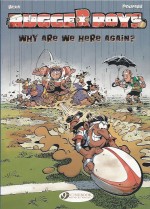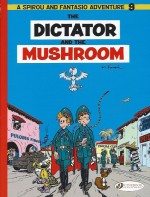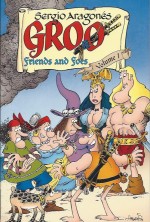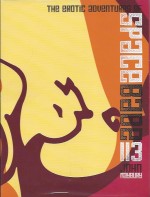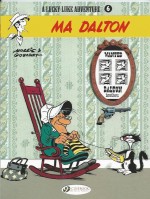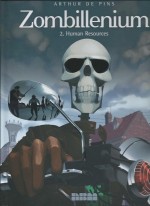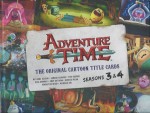

By V.T. Hamlin (Ken Pierce Books)
ISBN: 0-912277-02-5
Modern comics evolved from newspaper comic strips. These pictorial features were, until relatively recently, extremely popular with the public and highly valued by publishers who used them as a powerful weapon to guarantee and even increase circulation and profits. From the earliest days humour was paramount; hence our umbrella terms “Funnies†and of course “comicsâ€.
Despite the odd ancestor or precedent like Roy Crane’s Wash Tubbs (comedic when it began in 1924, and gradually moving from mock-heroics to light-action into full-blown action-adventure with the introduction of Captain Easy in 1929), or Tarzan and Buck Rogers – which both debuted January 7th 1929 as an adaptation of pre-existing prose properties – the vast bulk of strips produced were generally feel-good humour strips with the occasional child-oriented fantasy.
This changed in the 1930s when an explosion of action and drama strips were launched with astounding rapidity. Not only strips but actual genres were created in that decade and they still impact on not just today’s comic-books but all our popular fiction.
Another infinitely deep well of fascination for humans is cavemen and dinosaurs. During that heyday of America’s strip surge a rather unique real character created a rather unique and paradoxical cartoon character: one both adventurous and comedic and simultaneously forward-looking and fantastically “retro†at the same time…
Vincent Trout Hamlin was born in 1900 and did lots of things before becoming a cartoonist. When he mustered out of the US Expeditionary Force after the Great War he finished High School and then went to the University of Missouri. This was in 1920 and he studied journalism but, since he’d always loved drawing, the eager beaver took advantage of the institution’s art courses too.
He was always a supreme storyteller and lived long enough to give plenty of interviews and accounts – many impishly contradictory – about the birth of his antediluvian archetype…
As a press photographer Hamlin had roamed the Lone Star State and filmed the beginnings of the petroleum industry, catching the bug for finding fossils. Later, whilst drawing ads for a Texas Oil company, he became further fascinated with fossils as he struggled to create a strip which would provide his family with a regular income…
When V.T. decided to chance his arm at the booming comic strip business, those old stones and bones got his imagination percolating and he eventually came up with a perfect set-up for action, adventure, big laughs and even a healthy dose of social satire…
Alley Oop is a Neanderthal-ish caveman inhabiting a lush and fantastic land where dinosaurs still thrive. In fact his greatest friend and boon companion is Dinny; a faithful, valiant saurian chum who terrifies every other dinosaur in creation as well as all the annoying bipeds in residence.
Because Dinny is as smart and obedient as a dog, all the other cave dwellers – such as arrogant, insecure King Guzzle – generally treat the mighty, free-thinking, disrespectful Oop with immense caution…
Unlike most of his audience, Hamlin knew such things could never have occurred but didn’t much care: the set-up was too sweet to waste and it would prove to be the very least of the supremely imaginative creative anachronisms he and his brilliant wife Dorothy would concoct as the strip grew in scope and popularity.
Oop actually launched twice. In 1930 Hamlin whipped up primeval prototype Oop the Mighty which he then radically retooled and sold a year later to the small and local Bonnet-Brown Syndicate as Alley Oop. It debuted on December 5th 1932 and was gaining steam when Bonnet-Brown foundered during the worst part of the Great Depression in 1933.
Happily the strip had won enough of a popular following that representatives of the vast Newspaper Enterprise Association syndicate – whose other properties included Major Hoople, Boots and Her Buddies and the aforementioned Wash Tubbs – tracked down the neophyte scribbler and offered him a regular slot in papers all over America.
Alley Oop debuted again as a daily on August 7th 1933, reprising his old stories for a far larger audience before moving on to new adventures and winning a Sunday colour page on September 9th 1934, the year V.T., Dorothy and new daughter Theodora relocated to affluent Sarasota, Florida.
Sadly for such a revered series with a huge pedigree – still running today as both Sunday and daily feature, scripted by Carole Bender and drawn by her husband Jack – there has never been a concerted effort to properly collect the entire epic. There have however been tantalising outbursts of reprints in magazines and short sets of archive editions from Kitchen Sink, Dark Horse and IDW’s Library of American Comics.
One of – if not actually – the very first serious compilation came courtesy of dedicated preserver of great comics Ken Pierce, who in 1983 released this marvellously compact monochrome paperback edition which reprints one of the most revered sequences of the burly and boisterous dawn man.
Preceded by an Introduction from fellow cartoonist Herb Galewitz and ‘When Hamlin Started Digging Into History Out Came Alley Oop’ – a typically bright and breezy Press Release from 1960 – ‘The Sawalla Chronicles’ ran from April 10th to August 28th 1936 and detailed a classic clash between perennial free-thinker Oop and the increasingly oppressive forces of civilisation and polite society that was growing around him…
A little background: most cave-folk of that long ago time lived in a rocky village ruled over by devious, semi-paranoid King Guzzle and his formidable, achingly status-conscious wife Queen Umpateedle.
Their kingdom was dubbed Moo and the elite couple were guided/manipulated by sneaky shaman the Grand Wizer with all three of them constantly seeking to curb the excesses of the rebelliously independent, instinctively democratic Oop.
Our hero – toughest man in the land – had no time for all the silly fripperies and dumb made-up rules but he did usually give in to the stern glances and fierce admonishments of his long-suffering girlfriend Ooola. The uneasy balance of power in the kingdom comes from the fact that Guz and the Wizer, even with the entire nation behind them, were never a match for Oop and Dinny when they got mad…
As this story starts however that détente has suddenly ended because the Wizer has hypnotised the gigantic beast and turned him against Oop…
Seizing his chance, Guzzle orders his guards to throw his rival into “The Pitâ€, but when they all regain consciousness they see their intended victim is now astride the throne with the crown on his head…
With a new king in charge things start to move quickly and Oop’s only ally is his old, less-evolved rhyming pal Foozy, so they are hard-pressed to stop the Grand Wizer’s own power-grab since the malevolent old geezer still commands Dinny…
When the chums then fall out, Foozy decides to restore normality by putting Guz back on the throne and to that end devises a cunning plan to immobilise gargantuan Dinny. As events spiral completely out of control, however, it’s ferocious Umpateedle who finally restores the status quo by knocking a few stubborn male heads together…
Oop doesn’t care. After a few precarious and decidedly risky moments he and Dinny are restored and for him that’s what really matters.
As normality returns – exemplified by Umpateedle organising a swanky Ladies Day – Oop takes Ooola on a hunting trip deep into unexplored territory where they discover other men. Moreover these strangers are riding dinosaurs, something everyone thought only Oop could do…
A brutal battle results in some answers from thoroughly beaten Wur, warrior-guardian of the previously unsuspected Sawalla Frontier who surprisingly invites the startled Moovians to visit his own unsuspected country.
Despite Oop’s suspicions, Sawalla seems a paradise. Sited beside a colossal body of water everything is great until Wur – who also happens to be king – informs him they will be staying forever…
Despite lethal swamps and ferocious dinosaurs barring their way back, Oop is determined to return – more because nobody tells him what to do than any degree of patriotism or homesickness – and doesn’t stop looking for escape routes even after Wur sets a gang of brutes to watch him. More distressing is the fact that Wur – desiring Ooola for himself – wants to marry the male Moovian to his own sister Loo…
When that scheme goes south he opts to just get rid of Oop, unaware that his rival has co-opted the Sawallan squad ordered to supervise him. As intrigue turns into all-out war, Oop, Ooola and their converts try to escape through the lethally impassable swamp with all Wur’s forces hard on their soggy heels.
As the fugitives’ arduous slog and occasional battles with Sawallan scouts intensify, at the other end of the green hell, long-missing Dinny finally emerges from the jungle depths and trots into Moo. Realising something’s up, Foozy – accompanied by towering throwback the Cardiff Giant – leads a rescue mission into the swamp and is soon engaged in furious battle with Wur and his army, even as elsewhere Oop’s party fight for their lives against an armada of wild and angry thunder lizards.
And then in a one terrifying moment, the abundant flora catches alight and a monstrous forest fire begins…
Fast, furious, fantastically funny and bitterly barbed in the manner of Billy Wilder and Preston Sturges, Alley Oop is a bone fide classic of comicstrip narrative, long overdue the respect and honour of a complete chronological collection.
However until some enlightened publisher gets around to it, by all means start digging on line and in bargain bins for each – or any – of the wonderful tomes already released. It’s barely the tip of an iceberg but it’s a start…
© 1983 Newspaper Enterprise Association, Inc. All rights reserved. ALLEY OOP COMIC STRIPS © 1936 Newspaper Enterprise Association, Inc. Introduction and editorial material © 1983 Hern Galewitz.


